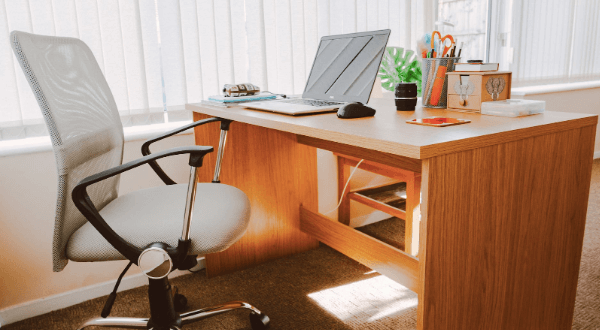If you work a desk job, you spend at least 40 hours a week sitting. That doesn’t count time in your car, time watching tv, or even the time you spend sitting at tables and eating. All of that sitting really does a number on your spinal health. Choosing the right office chair can make the difference between feeling normal or living in constant discomfort. This guide will help you find the perfect office chair.
Seat Height
Every office chair should have some height adjustments available, but you should make sure that your chair adjusts for you, especially if you are very tall or very short. At the proper height, you should be able to sit with your back on the back rest and your feet on the floor. While in this position, your legs should make a 90 degree angle, with your lower legs perpendicular to the floor. Your thighs should be just barely hovering above the seat cushion for most of their length to avoid a pressed and pinched sciatic nerve.
Arm Rests
Your chair doesn’t absolutely have to have arm rests, although they are helpful in certain chair configurations to guarantee your arms dont fatigue throughout the day. If your chair does have arms, they should be movable or removable, so that you can clear them out of teh way if you want to get closer to your desk to help with eyestrain.
Cushion
This is a bit of a goldilocks situation that will vary by user, but don’t fall into the trap of thinking that a super soft seat is always best. Soft seat cushions discourage you from getting up and walking around regularly, which is important for keeping everything in place and healthy. Another major benefit of a firm office char: when it is supporting you, you are actually supported. All the lumbar support in the world won’t make up for a seat that is so soft your lumbar region doesn’t stay in the right spot.
Back Support
This is important. The back of the chair should gently but completely fill the gap at your lumbar region in your lower back when you are sitting up and leaning against the backrest. This will help your whole spine maintain its curvature, which will reduce fatigue and soreness through the back.
The biggest drawback to proper support is that is usually only adequate for certain positions. If the support is positioned for when you are leaning all the way back, it won’t touch at all if you are leaning forward to better see your screen. Conversely, back support that is positioned to provide counter pressure when you are leaning forward will be so uncomfortable when sitting back that you won’t be able to.
There are modern chairs that attempt to meet these challenges in novel ways. There is one chair that has a mesh, screen-like material instead of cushions so it changes the way pressure is felt. What may be the perfect office chair for back pain is something like the BackString C1. this innovative chair uses a swiveling bucket base for the seat. This causes you to sit naturally with the proper curve to your spine, regardless of whether you are leaning forward or slouching back.
No matter what chair you choose, sit in it facing your desk. Find a way to elevate the screen so that the center is at or near your eye level. Looking down at your desk causes neck strain and headaches.
Choosing an office chair is easy. Find one that meets all the parameters listed. Whether you try it out in the store or not, ensure it has a return policy, because you might decide it doesn’t work for your needs after you have had it a couple of weeks, and you want to ensure you have an out. After that, you won’t need to buy another chair for years.
 HammBurg Be informed with latest news, reviews, entertainment, lifestyle tips, and much more.
HammBurg Be informed with latest news, reviews, entertainment, lifestyle tips, and much more.




